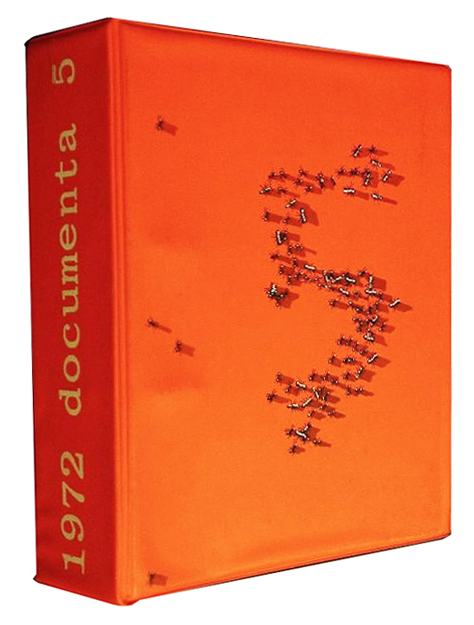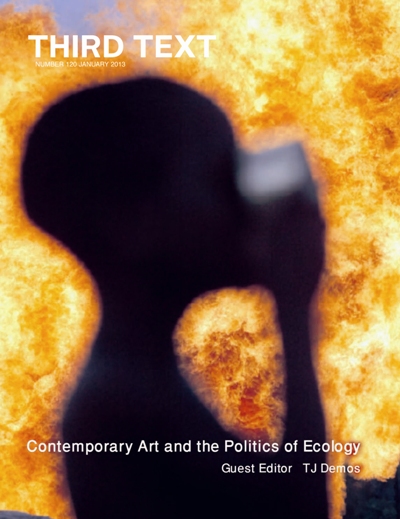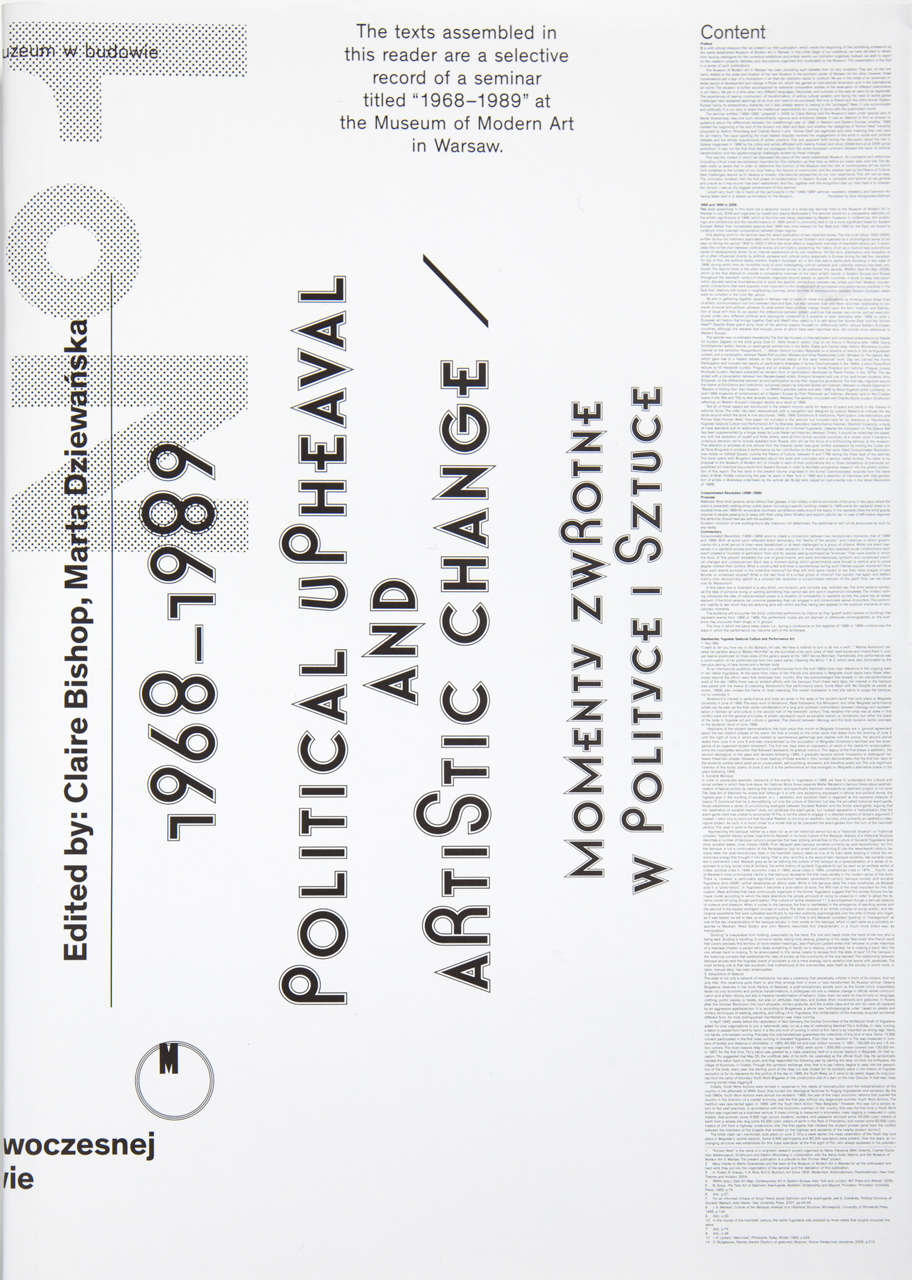Harald Szeemann, et al.: Documenta 5, catalogue (1972) [DE]
Filed under catalogue | Tags: · advertising, art, conceptual art, film, institutional critique, light art, museum, outsider art, performance art, politics, propaganda, realism, science fiction, systems art, utopia

“Even decades later, Documenta 5, the exhibition that was criticized in 1972 as being “bizarre.. vulgar.. sadistic” by Hilton Kramer (NYT) and “monstrous.. overtly deranged” by Barbara Rose (NYM), resonates today as one of the most important exhibitions in history. Both hailed and derided by artists and critics, the exhibition was the largest, most expensive and most diverse of any exhibition anywhere, and foreshadowed all large-scale, collaboratively curated, comprehensive mega-shows to come.
Chiefly curated by the Swiss curator, Harald Szeemann, it was a pioneering, radically different presentation that was conceived as a 100-day event, with performances and happenings, outsider art, even non-art, as well as repeated Joseph Beuys lectures, and an installation of Claes Oldenburg’s Mouse Museum, among many other atypical inclusions. The show widely promoted awareness of a contract known as The Artist’s Reserved Rights Transfer and Sale Agreement, which protects artists’ ongoing intellectual and financial rights with regard to their production.” (Source)
“Featuring the works of over 170 artists and an equally expansive variety of materials and subjects drawn from popular cultural materials such as science fiction publications, kitsch objects, exploitation films, as well as advertising imagery, in addition to the more anticipated painting and sculpture – Documenta 5 valiantly attempted to bridge the gap between art, culture, science and the broader society.
A lasting highlight of the exhibition was the graphic logo for the show designed by Edward Ruscha. Commissioned by Szeeman, Ruscha’s graphic image for the show featured ants arranged in the word ‘Docu / menta’ and the number ‘5.’ The emblem was used on the exhibition’s poster and catalogue cover.” (Source)
Contents of Part B:
1 Hans Heinz Holz: Kritische Theorie des ästhetischen Zeichens (catalogue foreword, 86 pp),
2 Bazon Brock & Karl Heinz Krings: Audiovisuelles Vorwort (audiovisual foreword, 19 pp),
3 Eberhard Roters: Trivialrealismus & Trivialemblematik (16 pp),
4 Ingolf Bauer: Bilderwelt und Froemmigkeit (10 pp),
5 Gesellschaftliche Ikonographie an zwei Beispielen (8 pp),
6 Charles Wilp, Hans Heinz Holz: Werbung (4 pp),
7 Reiner Diederich, Richard Grübling, Klaus Staeck: Politische Propaganda (14 pp),
8 Pierre Versins: Science Fiction/Heute von gestern gesehen (10 pp),
9 François Burkhardt: Utopie/Morgen von gestern gesehen (16 pp),
10 Ursula Barthelmess, Hans-Henning Borgelt, Linde Burkhardt, Wolfgang Hoebig: Spiel und Wirklichkeit (14 pp),
11 Theodor Spoerri: Bildnerei der Giesteskranken (18 pp),
12 Gerhard Buettenbender, Sigurd Hermes: Film (28 pp),
13 Museen von Künstlern (17 pp),
14 Sozialistischer Realismus (1 p),
15 Jean-Christophe Ammann: Realismus (58 pp),
16 Johannes Cladders, Harald Szeemann: Individuelle Mythologien – Selbstdarstellung: a) Performance, b) Film – Prozesse (220 pp),
17 Konrad Fischer, Klaus Honnef, Gisela Kaminski: Idee + Idee / Licht (92 pp),
18 Information + The Artist’s Reserved Rights Transfer and Sale Agreement (44 pp),
19 Verzeichnis der ausgestellten Werke
20 Allgemeine Bibliographie
21 Waehrend: Ereigniskalender
22 Nachher 1: Text
23 Nachher 2: Bild
24 Nachher 3: Presse
25 Fotonachweis
documenta 5. Befragung der Realität – Bildwelten heute
Edited by Harald Szeemann, Marlis Grüterich, Katia von den Velden, Jennifer Gough-Cooper
Publisher documenta and Bertelsmann, Kassel, 1972
ISBN 3570028569, 9783570028568
64+80 & 740+ pages
via The DOR (at Archive.org)
Analyses and commentaries:
3sat TV documentary (video, 41 min, 1972, DE)
Der Spiegel (1972, DE)
Klaus Herding & Hans-Ernst Mittig on Holz’s foreword (Kritische Berichte, 1973, DE)
Documenta 5 in Art Since 1900 (2004, EN)
Dirk Schwarze (Documenta Archiv, 2014, DE)
Maria Bremer (Stedelijk Studies, 2015, EN)
documenta Archiv, (2)
Wikipedia (DE)
WorldCat
Part A (144 pp, PDF, 57 MB)
Part B (740+ pp, PDF, 287 MB, sections 19-24 missing; updated on 2023-3-28)
Third Text, 120: Contemporary Art and the Politics of Ecology (2013)
Filed under journal | Tags: · activism, aesthetics, art, art criticism, climate crisis, contemporary art, earth, ecology, environment, oil, politics, postcolonialism, visual culture

“This special issue of Third Text investigates the intersection of art criticism, politico-ecological theory, environmental activism and postcolonial globalization. The focus is on practices and discourses of eco-aesthetics that have emerged in recent years in geopolitical areas as diverse as the Arctic, Nigeria, Bangladesh, Indonesia, Europe and Mexico. The numerous contributors address new aesthetic strategies through which current ecological emergencies – including but not limited to the multifaceted crisis of climate change – have found resonance and creative response in artistic practice and more broadly in visual culture.” (from the Introduction)
With contributions by Christoph Brunner, Roberto Nigro, Gerald Raunig, Jessica L Horton, Janet Catherine Berlo, Jimmie Durham, Subhankar Banerjee, Nabil Ahmed, Berin Golonu, Basil Sunday Nnamdi, Obari Gomba, Frank Ugiomoh, Ursula Biemann, Peter Mörtenböck, Helge Mooshammer, Patrick D Flores, Raqs Media Collective, Luke Skrebowski, Emily Apter, Steven Lam, Gabi Ngcobo, Jack Persekian, Nato Thompson, Anne Sophie Witzke, Liberate Tate, TJ Demos, Eduardo Abaroa and Minerva Cuevas.
Guest editor: TJ Demos
Publisher Third Text, London, January 2013
175 pages
PDF (10 MB)
Online supplement (contains another 6 articles + introduction)
Claire Bishop, Marta Dziewańska (eds.): 1968-1989: Political Upheaval and Artistic Change (2010)
Filed under book | Tags: · art, art history, east-central europe, eastern europe, happening, ideology, performance art, politics, southeastern europe

“This volume comprises a selection of texts and presentations from a seminar organized in Warsaw in 2008 by the Museum of Modern Art with art historian Claire Bishop that presented a comparative reflection of Western and Eastern European evaluations of the artistic significance of 1968 and the transformations of 1989, which saw the end of the Soviet empire. The essays presented here explore the extent to which political change affects the form, medium, and distribution of visual art; explains the differences among artistic practices that appear similar but arose in diverse political and ideological contexts; and considers the possibility and desirability of writing a European art history that brings together East and West.”
With contributions by Claire Bishop, Tania Brugera, Branislav Jakoljević, Ana Janevski, Vit Havránek, Tomáš Pospiszyl, Luiza Nader, Gabriela Świtek, Piotr Piotrowski, Attila Tordai-S., Borut Vogelnik, Charles Esche, Kathrin Rhomberg, Joanna Mytkowska, Grzegorz Kowalski and Artur Źmikewski, Milan Knížák, and Ján Budaj.
Publisher Museum of Modern Art, Warsaw, 2010
ISBN 9788392404408
232 (of 504) pages
via Academia.edu
PDF (English section only, 43 MB)
Comment (0)
